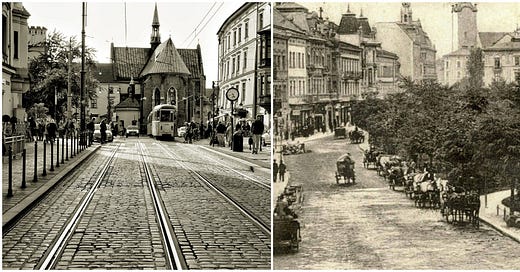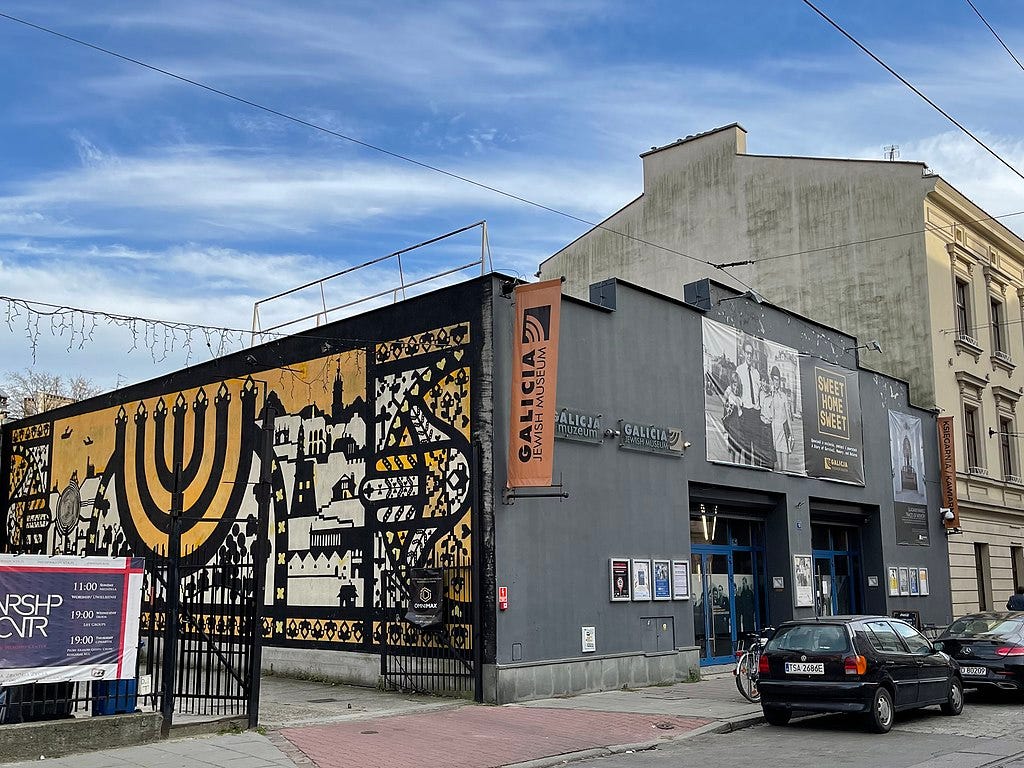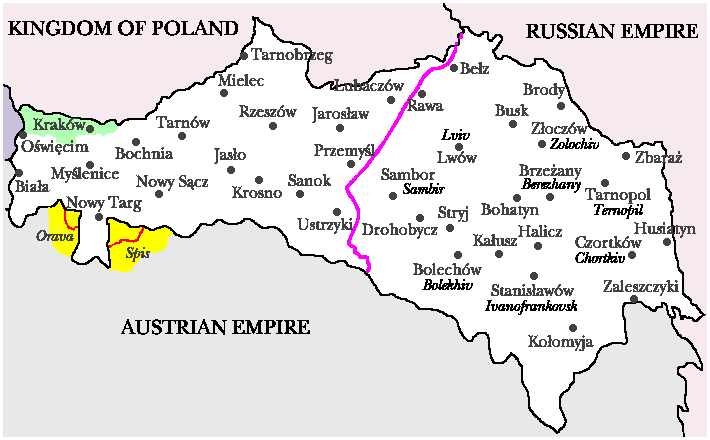Introduction
Galicia is a historical region in Eastern Europe with a complex past. This post will begin by examining Galicia from the late 1700s. From 1772 until 1846, Galicia was an independent entity. The history of Galicia in the 19th and 20th centuries was marked by unique attitudes and events. It had a socially liberal regime in its treatment of minorities and was a divided multicultural state. This information is sourced from Wikipedia on the subject of the people of Galicia.
Galicia had arguably the most ethnically diverse population of all the countries in the Austrian monarchy, consisting mainly of Poles and "Ruthenians";[27] the peoples known later as Ukrainians and Rusyns, as well as ethnic Jews, Germans, Armenians, Czechs, Slovaks, Hungarians, Roma and others. In Galicia as a whole, the population in 1910 was estimated to be 45.4% Polish, 42.9% Ruthenian, 10.9% Jewish, and 0.8% German.[28] This population was not evenly distributed. The Poles lived mainly in the west, with the Ruthenians predominant in the eastern region ("Ruthenia").
This post focuses on the Jewish population of Galicia because the acceptance of this minority was unusual in the region. It is also interesting because it is the origin of many American Jewish families. Galicia was one of the few places that were accepting of Jews during the pogroms against Jews in Russia and Poland. (Pogroms were organized massacres of a particular ethnic group, particularly that of Jewish people in Russia or Eastern Europe in the late 19th and early 20th centuries.)
History of the Jews in Galicia
As noted, Galicia (technically the Kingdom of Galicia and Lodomeria) was one of Europe's most ethnically diverse regions. Ethnic Jews made up between 10% and 12% of the population. The Jewish presence in Galicia dates back to the medieval period, but it was in the 19th century that their population and influence grew significantly. By the early 1800s, Galicia was part of the Habsburg Empire. In 1846, it was incorporated as a self-governing entity within Austria-Hungary. It became a haven for Jews facing persecution in other parts of Europe.
Throughout the 19th century, Galicia's Jewish community flourished, contributing significantly to the region's economic, cultural, and intellectual life. They established schools, synagogues, and community centers, and were actively involved in trade, industry, and the arts. The city of Lviv (formerly known as Lemberg) emerged as a major hub of Jewish learning and culture.
However, the late 19th and early 20th centuries presented significant challenges to the Jewish community. Anti-Semitic sentiments intensified, and many Jews experienced discrimination and violence. Despite these adversities, the Jewish community remained resilient, allowing their cultural and religious life to flourish.
For example, Shmuel Yosef Agnon (also known as Shai Agnon), one of the most renowned modern Hebrew writers, was born in Eastern Galicia in 1887. Other notable Jewish Galicians include Elizar Adler, one of the founders of Jewish communities; Lee Strasberg, a prominent acting coach; and Billy Wilder, the celebrated American film director.
Tracing the family histories of many Jewish Americans shows that their ancestry begins in what was historically Galicia.
Division of Galicia After World War I
The end of WWI resulted in the collapse of the Austro-Hungarian Empire, leading to the division of Galicia between Poland and the newly formed Soviet Union. This division had a significant impact on both the Jewish community and the wider population of Galicia.
In the Polish region of Galicia, Jews faced increasing anti-Semitism and economic challenges. Nevertheless, they continued to enrich the region's cultural and economic life. During this period, numerous Jewish institutions were established, including schools, theaters, and newspapers.
In the Soviet region of Galicia, the situation was different. The Soviet government enforced strict controls on religious and cultural activities, resulting in the closure of many Jewish institutions. Jews faced repression and were often targeted by the Soviet regime.
This division of Galicia resulted in significant migration. Many Jews relocated to other parts of Europe or Palestine in search of better opportunities and to escape persecution.
During World War II, the Nazi regime abducted and killed nearly all the Jews remaining in the Galicia region, which included areas now in Poland and the Soviet Union. Jewish life in the region was obliterated and has only begun to return after the fall of Communist rule in Poland, Ukraine, and Slovakia.
Current System of Governance
Galician territory is still divided between Poland and Ukraine. The region's governance reflects the political systems of these two countries.
Western Galicia is part of several administrative regions in Poland. The primary capital of the Polish region of Galicia was Kraków. The Polish government operates under a democratic system with elected national, regional, and local officials. In recent years, the Jewish community in Polish Galicia has experienced a resurgence, with efforts to preserve and celebrate their historical heritage.
Eastern Galicia is part of several administrative areas in Ukraine as well. Despite the ongoing war, Ukraine functions under a democratic system. The capital of this region in Galicia was the city of Lviv in Ukraine. The Jewish community in Ukrainian Galicia is also working to preserve its heritage, and there are ongoing efforts to revitalize Jewish cultural and religious life.
Conclusion
There is no positive way to interpret the history of Galicia or its people (Jewish, Catholic, or Orthodox) during and after WWII. Following the establishment of communist regimes in Eastern Europe, the region exhibited significant hostility towards the Jewish community.
This has changed since the fall of the Communist governments. Despite significant challenges, the Jewish community has contributed immensely to area’s heritage and is working to recover and share that heritage in Poland and Ukraine due to the war. The current governance systems in Poland and Ukraine continue to shape the region and its diverse population. Understanding Galicia's history and present-day governance helps us appreciate the complexities of this unique region and its enduring Jewish legacy.
Unlike many populations who long for a homeland, for example, the Basque or the Kurds, there are no ethnic “Galicians” as such. They were almost all Poles, Ukrainians, or Jews, each with their own homelands. Galicia was a transitory entity, and there is no movement to restore it.






